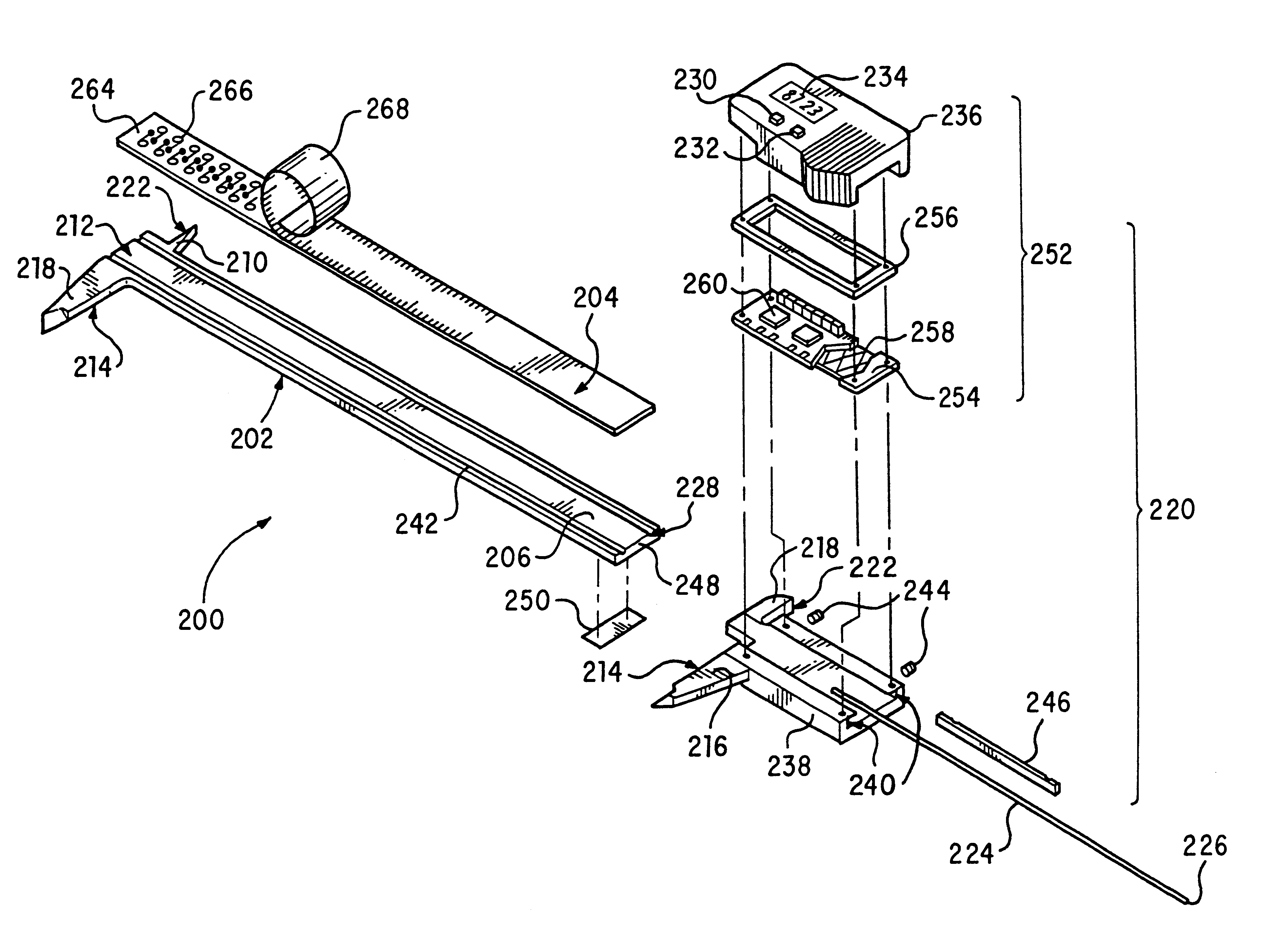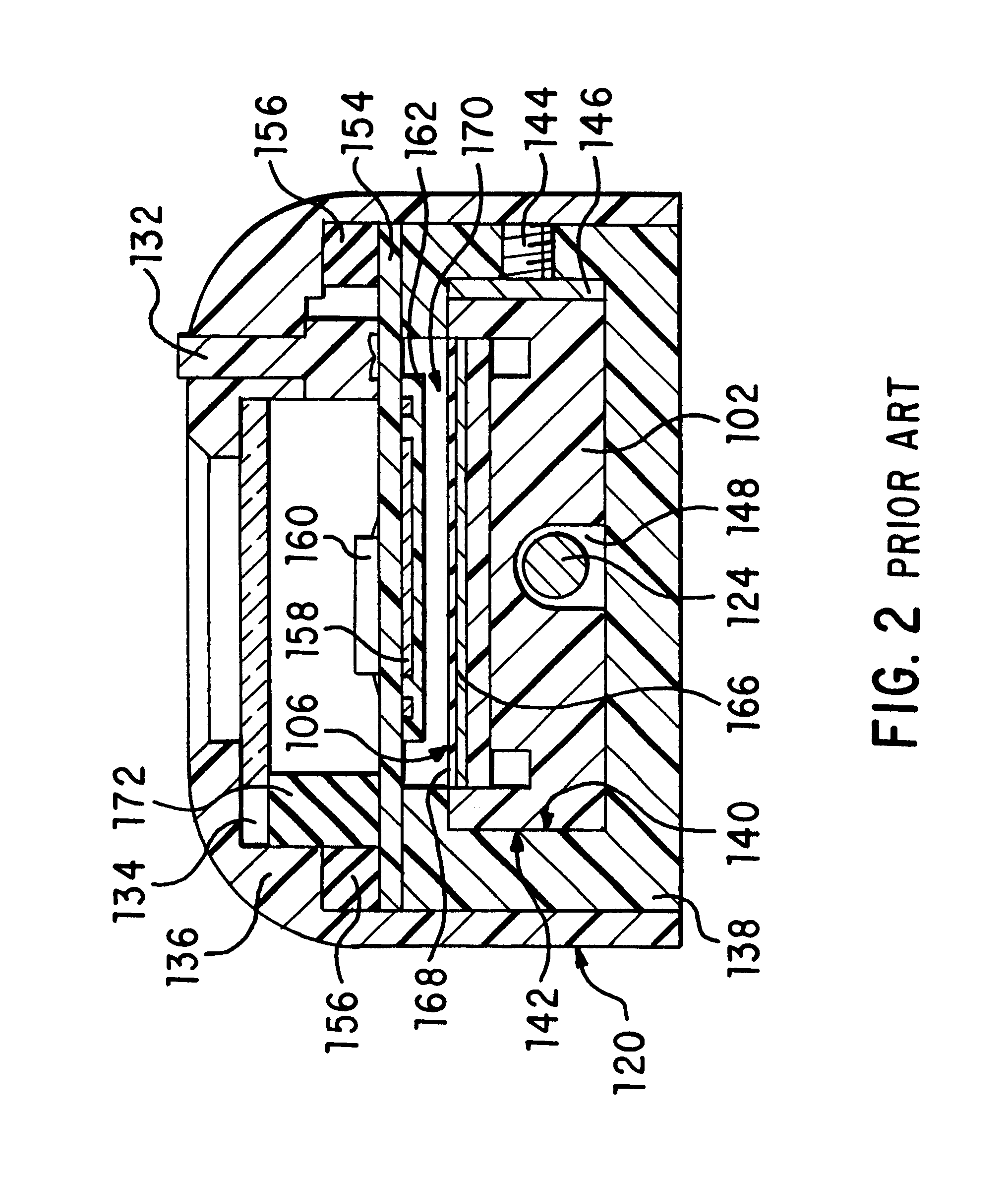Electronic caliper using a reduced offset induced current position transducer
a transducer and offset technology, applied in the field of electronic calipers, can solve the problems of inability to eliminate the source of error, inability to reduce the accuracy of the transducer, so as to improve the proportion of the useful output signal component, improve the winding configuration, and improve the fabrication accuracy
- Summary
- Abstract
- Description
- Claims
- Application Information
AI Technical Summary
Benefits of technology
Problems solved by technology
Method used
Image
Examples
first embodiment
FIGS. 6 and 7 show the reduced-offset incremental induced current position transducer 200 used in the electronic caliper of this invention, which produces an output type usually referred to as "incremental". "Incremental" output is defined as a cyclic output which is repeated according to a design-related increment of transducer displacement.
In particular, FIG. 6 shows a first embodiment of the reduced offset scale 204 of the transducer 200. The reduced-offset scale 204 includes a first plurality of coupling loops 274 interleaved with a second plurality of coupling loops 276. Each of the coupling loops 274 and 276 is electrically isolated from the others of the first and second plurality of coupling loops 274 and 276.
Each of the first plurality of coupling loops 274 includes a first loop portion 278 and a second loop portion 280 connected by a pair of connecting conductors 282. Similarly, each of the second plurality of coupling loops 276 includes a first loop portion 284 and a seco...
second embodiment
FIG. 8 shows a read head that can be used with a scale according to FIG. 6. The receiver in this version of the read head has three receiver windings 318, 320 and 322. The receiver windings are offset from each other along the measurement axis by 1 / 3 of the wavelength .lambda.. FIG. 9 shows the signal functions from the three receivers as a function of the position along the measurement axis.
It should be appreciated that perfectly sinusoidal output functions are difficult to achieve in practice, and that deviations from a perfect sinusoidal output contain spatial harmonics of the fundamental wavelength of the transducer. Therefore, the three phase configuration of this second embodiment of the reduced-offset induced current position transducer has a significant advantage over the first embodiment of the reduced offset induced current position transducer, in that the third harmonic content in the separate receiver windings' signal can be largely eliminated as a source of position mea...
third embodiment
FIGS. 11A-11D show the read head and scale for the reduced offset induced current position transducer of the linear scale of this invention. This embodiment contains only one transmitter winding loop 490, which is placed on one side of the receiver windings 496 and 498 on the read head 458. The scale 404 is a two layer printed circuit board (PCB). Pattern forming coupling loops 474 and 476 are arrayed on the scale 404 along the measurement axis.
Each coupling loop 474 includes a first loop portion 478 which is connected by connection lines 482 to a second loop portion 480. The first and second loop portions 478 and 480 are connected so that an induced current produces the same polarity field in the first loop portion 478 and the second loop portion 480. Each coupling loop 476 includes a first loop portion 484 which is connected by connection lines 488 to a second loop portion 486. The first and second loop portions 484 and 486 are connected so that an induced current produces fields ...
PUM
 Login to View More
Login to View More Abstract
Description
Claims
Application Information
 Login to View More
Login to View More - R&D
- Intellectual Property
- Life Sciences
- Materials
- Tech Scout
- Unparalleled Data Quality
- Higher Quality Content
- 60% Fewer Hallucinations
Browse by: Latest US Patents, China's latest patents, Technical Efficacy Thesaurus, Application Domain, Technology Topic, Popular Technical Reports.
© 2025 PatSnap. All rights reserved.Legal|Privacy policy|Modern Slavery Act Transparency Statement|Sitemap|About US| Contact US: help@patsnap.com



